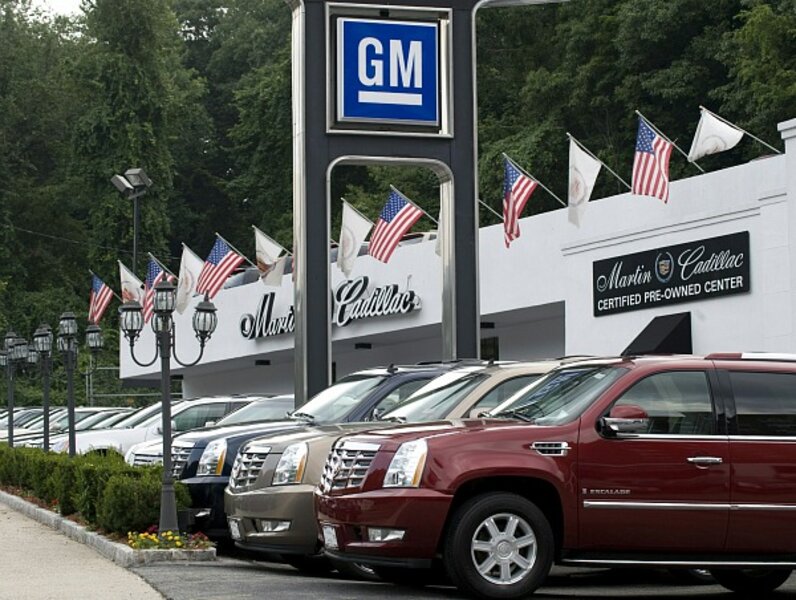Feds begin pull back from managing General Motors operations
Loading...
| Chicago
The federal government’s role in the daily operations of General Motors is expected to lessen in the wake of this week’s initial public offering (IPO) that yielded the company over $20 billion in cash and reduced the US Treasury Department’s stake in the company to 37 percent – much less than the government’s former 61 percent majority holding.
Ron Bloom, head of Treasury’s task force overseeing GM, told the Detroit News Saturday that as the company continues to sell stock, the government will begin stepping back to ensure that the company succeeds on its own.
"With the public owning more shares than we own, I think it is fitting and proper … that we tick back our engagement," Bloom said.
The IPO General Motors conducted Thursday was the largest in US history. The company sold 478 million of its 912 million shares at an average $33 offering price. GM’s stock closed at $34.26. To break even the company says it needs to sell its remaining shares at an average price of $52.80.
GM receive $49.5 billion in federal money to prevent collapse after years of struggling with $88 billion in annual losses since 2004, over $60 billion in debt and retiree obligations, and shrinking cash assets.
Since the government intervention, the company shrunk its labor force, dealership network, and manufacturing facilities. It discontinued failing brands Pontiac and Hummer, and it committed to expand in such foreign markets as China and Brazil.
GM earned nearly $5 billion in the first nine months of this year, resulting in what the company expects will be its first profitable year since 2004. Mr. Bloom said the task force had been in close discussions with GM about deciding when to hold the IPO and at what opening price the shares should be set.
However, in wake of the company’s revenue success this year, Bloom said the government wanted to remain on the sidelines as company executives courted foreign investors and mutual fund managers in wake of the IPO. He also confirmed that the task force established an exit plan from the company as early July 2009, the month GM entered bankruptcy.
“We were assuring ourselves that they were doing a good job getting ready without telling them how to tell their story," Bloom said.
Moving forward, Treasury officials are expected to receive financial briefings and will attend GM’s first annual meeting as a public company. Analysts say it may take up to two years for the government to fully exit the company.
Until then, Bloom said, the task force will not require updates as frequently as it did in the past, but it will “maintain the ‘no surprises’ rule” to ensure GM executives understand “that no major decisions get made without telling [the task force] before they are implemented.”
Today GM owes $15.6 billion in debt and $9.4 billion in undefended retiree obligations.





